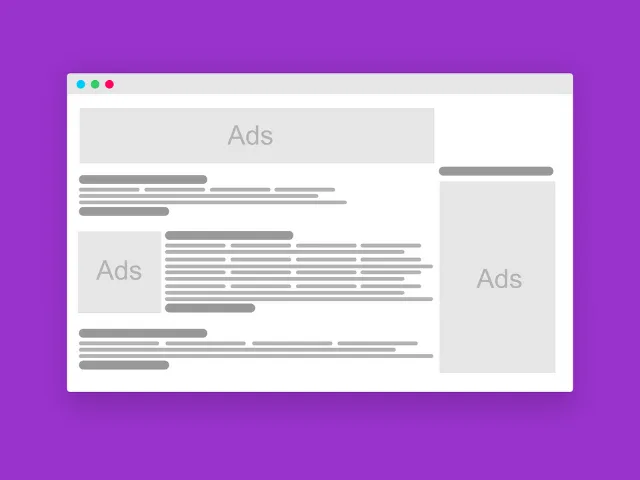Starting a blog can be a fun way to share your thoughts, passions, and expertise with the world. But did you know it can also be a great way to make money? If you’re looking for ways on how to monetize a blog into a source of income, you’re in the right place. In this guide, we’ll explore 15 different methods bloggers make money online.
Whether you’re a newbie or have been blogging for a while, these strategies are designed to be straightforward and achievable. From affiliate marketing to selling digital products, we’ll cover a variety of options that can suit different types of blogs and audiences. So, let’s dive in and discover how you can start earning money from your blog today!

Affiliate marketing is one of the most popular ways to make money with your blog. It’s a simple concept: you promote products or services and earn a commission for every sale made through your referral link. Here’s how you can get started:
- Join Affiliate Programs: Look for affiliate programs that match your blog’s niche. Some popular options include Amazon Associates, ShareASale, and CJ Affiliate.
- Integrate Affiliate Links: Write reviews, tutorials, or listicles that naturally incorporate affiliate links. Make sure to disclose that you may earn a commission from these links.
- Track Your Earnings: Use tools provided by the affiliate programs to monitor your earnings and optimize your strategies.
Affiliate marketing works best when you promote products you genuinely believe in and that your audience will find valuable. It can be a steady source of income as your blog grows and attracts more visitors.
Pros and Cons of Affiliate Marketing
Pros
Cons
Real-Life Example
Ryan Robinson: Ryan Robinson runs a successful blog where he provides valuable content on business and entrepreneurship. He earns substantial income through affiliate marketing by promoting products he uses and recommends to his readers. Ryan integrates affiliate links naturally within his content, making it a seamless part of his articles and tutorials.
You Might Also Like:

Display advertising is another effective angle to make some money blogging. This method involves placing ads on your site and earning money based on the number of impressions or clicks these ads receive. Here’s a step-by-step guide to getting started:
- Sign Up for an Ad Network: The most popular choice is Google AdSense, but there are others like Media.net and Raptive. These networks match your blog with relevant ads from advertisers.
- Place Ad Codes on Your Blog: Once approved by an ad network, you’ll receive code snippets to place on your blog. These codes automatically display ads in designated areas.
- Optimize Ad Placement: Position your ads in spots that are likely to get noticed without being intrusive. Common places include the header, sidebar, and within the content.
How It Works
- Impressions: You earn a small amount each time an ad is displayed to a visitor. This is called Cost Per Mille (CPM), where “mille” means thousand.
- Clicks: You earn a larger amount each time a visitor clicks on an ad. This is known as Cost Per Click (CPC).
Tips for Maximizing Ad Revenue
- Choose the Right Ad Sizes: Some sizes perform better than others. For instance, the 336×280 large rectangle and the 300×600 half-page ad tend to be more effective.
- A/B Testing: Experiment with different ad placements and sizes to see what works best for your audience. Use tools like Google Optimize for this purpose.
- Quality Content: The more valuable and engaging your content, the more traffic you’ll attract, which can lead to higher ad revenue.
Pros and Cons
Pros
Cons
Real-Life Example
Jon Dykstra from Fat Stacks Blog: Jon successfully monetizes his blogs using display ads. By optimizing ad placements and generating significant traffic, he earns a substantial income through Google AdSense. His approach involves using tools like the Ad Inserter plugin for A/B testing to determine the best-performing ad placements.
You Might Also Like:

Sponsored posts are a great way for blog monetization by collaborating with brands and businesses. In this method, companies pay you to write posts that promote their products or services. Here’s how you can effectively incorporate sponsored posts into your blog:
- Build a Media Kit: A media kit is a document that highlights your blog’s statistics, audience demographics, and advertising options. This helps potential sponsors understand the value of partnering with you.
- Reach Out to Brands: Identify brands that align with your blog’s niche and audience. You can contact them directly via email or through influencer marketing platforms like IZEA, AspireIQ, or TapInfluence.
- Create High-Quality Content: Write engaging and authentic posts that showcase the sponsor’s products or services. Ensure that the content fits seamlessly with your blog’s tone and style.
How It Works
- Negotiating Terms: Agree on the terms of the sponsorship, including the type of post (e.g., review, tutorial, or listicle), deadlines, and compensation. Be clear about what the sponsor will provide (e.g., free products, payment).
- Disclosure: Transparency is crucial. Clearly disclose to your readers that the post is sponsored, as required by law in many regions. This builds trust and maintains your blog’s integrity.
Tips for Successful Sponsored Posts
- Stay True to Your Brand: Only accept sponsorships that are relevant to your audience. Promoting unrelated products can harm your credibility.
- Engage Your Audience: Create content that is informative and entertaining, rather than purely promotional. Use personal stories and experiences to make the post relatable.
- Track Performance: Use analytics to measure the success of your sponsored posts. Metrics like page views, engagement, and click-through rates can help you understand what works and improve future collaborations.
Pros and Cons
Pros
Cons
Real-Life Example
Chris from Traveling Mitch: Chris runs a travel blog where he utilizes sponsored posts to generate income. He collaborates with travel brands and tourism boards to create content that promotes destinations and services. Sponsored posts blend seamlessly with his regular content, maintaining authenticity while earning income from sponsorships.

Selling digital products is another excellent monetization method while offering value to your audience. Digital products can include e-books, online courses, printables, and more. These products have low overhead costs and can be sold repeatedly without the need for inventory. Here’s how to get started:
- Identify Your Niche: Determine what type of DP’s would be most valuable to your audience. Consider their needs, interests, and the type of content they engage with on your blog.
- Create the Product: Develop high-quality assets. This could be an e-book on a topic you’re knowledgeable about, an online course, or templates and printables.
- Set Up a Sales Platform: Use platforms like Gumroad, or Etsy to sell your creations. These platforms handle transactions and deliver the product to the customer.
How It Works
- Product Creation: Invest time in creating a product that provides real value. For example, if you run a fitness blog, you might create an e-book with workout plans or a meal prep guide.
- Marketing: Promote your downloadable items through your blog, social media, and email newsletters. Use engaging content and visuals to highlight the benefits of your product.

Tips for Success
- Focus on Quality: Ensure your offers are well-designed, informative, and user-friendly. High-quality products are more likely to receive positive reviews and repeat purchases.
- Leverage Your Blog: Write blog posts that relate to your digital products and include links to purchase them. This can drive traffic and increase sales.
- Use Testimonials: Gather and display testimonials from satisfied customers. Positive reviews can significantly boost credibility and sales.
Pros and Cons
Pros
Cons
Real-Life Example
Harsh Agrawal from ShoutMeLoud
Overview: Harsh Agrawal runs the popular blog ShoutMeLoud, where he shares insights and tips on blogging, SEO, and digital marketing. One of his successful strategies for monetizing his blog is selling digital products, particularly ebooks and online courses.

Offering services is a powerful monetization strategy, by leveraging your skills and expertise. This method allows you to provide personalized value to your audience and can be highly profitable. Here’s how you can get started:
- Identify Your Expertise: Determine what services you can offer based on your skills and the needs of your audience. Common services include consulting, coaching, freelance writing, graphic design, and virtual assistance.
- Create a Services Page: Set up a dedicated page on your blog that outlines the services you offer, your rates, and how potential clients can contact you. Include testimonials and case studies to build credibility.
- Promote Your Services: Use your blog posts, social media, and email newsletters to promote your services. Highlight the benefits and outcomes clients can expect.
How It Works
- Consulting and Coaching: If you have expertise in a particular area, offer consulting or coaching sessions. For example, if you run a fitness blog, you could offer personalized workout plans and coaching.
- Freelance Writing and Design: Use your writing or design skills to offer freelance services. Many businesses are looking for quality content and design work, and your blog can serve as a portfolio.
Tips for Successful Blog Services
- Define Your Niche: Specialize in a specific area to attract clients who need your particular skills. This can help you stand out in a crowded market.
- Set Clear Boundaries: Clearly outline what is included in your services, your availability, and your rates. This helps manage client expectations and ensures smooth operations.
- Provide Exceptional Service: Deliver high-quality work and excellent customer service to build a strong reputation and encourage repeat business and referrals.
Pros and Cons
Pros
Cons
Real-Life Example
Erin Flynn of ErinFlynn.com
Erin Flynn is a web designer and business strategist who successfully monetizes her blog by offering a range of services to her audience. She provides web design, business coaching, and consulting services tailored to creative entrepreneurs and small business owners.

Offering membership or subscription models is a powerful way to generate recurring income from your blog. By providing exclusive content and resources to your most dedicated readers, you can build a loyal community while ensuring a steady stream of revenue. Here’s how to get started:
- Identify Your Offering: Determine what type of exclusive content or benefits you can offer. This could include premium articles, videos, webinars, Q&A sessions, or downloadable resources.
- Choose a Platform: Use platforms like Patreon, MemberPress, or Substack to manage your memberships or subscriptions. These platforms provide tools to handle payments and content delivery.
- Promote Your Membership: Use your blog, social media, and email newsletters to promote your membership or subscription options. Highlight the unique value and benefits that members will receive.
How It Works
- Exclusive Content: Create high-quality, valuable content that is only accessible to paying members. This could be in-depth guides, advanced tutorials, or insider tips.
- Community Access: Offer access to a private community where members can interact with you and each other. This could be a forum, Slack group, or Facebook group.
- Special Perks: Provide additional perks such as early access to content, discounts on products or services, or personalized support.
Tips for Success
- Understand Your Audience: Know what your audience values most and tailor your membership offerings to meet those needs. Conduct surveys or polls to gather feedback.
- Create a Tiered System: Offer multiple membership levels with varying benefits and price points. This allows you to cater to different segments of your audience.
- Deliver Consistently: Ensure that you consistently provide value to your members. Regularly update your content and engage with your community to keep them satisfied and subscribed.

Pros and Cons
Pros
Cons
Real-Life Example
Pat Flynn of Smart Passive Income
Pat Flynn, a renowned entrepreneur and blogger, monetizes his platform through a membership model. He created the Smart Passive Income (SPI) Pro Community, a membership site that provides exclusive content, networking opportunities, and resources for online business owners and entrepreneurs.

Selling physical products is another effective way to monetize your blog. This method involves launching an online store where you can sell merchandise, books, or other tangible items related to your blog’s niche. Here’s how to get started:
- Decide What to Sell: Choose products that are relevant to your blog’s content and audience. This could be branded merchandise, handmade crafts, books, or any other items that your readers would find valuable.
- Set Up an E-Commerce Platform: Use platforms like Shopify, WooCommerce, or Etsy to create your online store. These platforms provide tools to manage inventory, process payments, and handle shipping.
- Promote Your Products: Use your blog, social media, and email newsletters to promote your products. Share stories, photos, and testimonials to generate interest and drive sales.
How It Works
- Inventory Management: Keep track of your inventory to ensure you can meet demand. Consider using print-on-demand services to minimize upfront costs and risks.
- Order Fulfillment: Decide how you will handle order fulfillment. You can manage it yourself, use a third-party logistics provider, or drop ship products directly from suppliers.
- Customer Service: Provide excellent customer service to build trust and encourage repeat online business. Respond to inquiries promptly and handle any issues professionally.
Tips for Success
- Quality Products: Ensure that the products you sell are of high quality and meet your customers’ expectations. Positive reviews and word-of-mouth recommendations can significantly boost your sales.
- Professional Presentation: Invest in professional product photos and descriptions. A well-presented product is more likely to attract buyers.
- Leverage Your Blog: Write blog posts that feature your products and share behind-the-scenes stories. This helps create a personal connection with your readers and encourages them to make a purchase.
Pros and Cons
Pros
Cons
Real-Life Example
Andrew Rea of Binging with Babish
Andrew Rea, the creator of the popular YouTube channel and blog “Binging with Babish,” successfully monetizes his platform by selling branded physical products. He launched his own line of kitchenware, leveraging his large audience of cooking enthusiasts.

Crowdfunding is a great way to monetize your blog by receiving financial support from your readers. This method allows you to raise funds for specific projects or ongoing content creation through platforms like Patreon, Ko-fi, or GoFundMe. Here’s how to get started:
- Choose a Crowdfunding Platform: Select a platform that best fits your needs. Patreon and Ko-fi are ideal for ongoing support, while GoFundMe is great for one-time projects.
- Set Up Your Profile: Create a compelling profile that explains who you are, what you do, and why you’re seeking support. Be clear about how the funds will be used.
- Promote Your Campaign: Use your blog, social media, and email newsletters to promote your crowdfunding campaign. Share regular updates and express gratitude to your supporters.
How It Works
- Ongoing Support: Platforms like Patreon allow you to offer subscription-based support, where patrons contribute a set amount each month in exchange for exclusive content or perks.
- One-Time Contributions: Platforms like Ko-fi and GoFundMe enable supporters to make one-time donations to your cause.
Tips for Success
- Offer Value: Provide exclusive content, early access to posts, behind-the-scenes looks, or other perks to incentivize support. Make your patrons feel special and appreciated.
- Be Transparent: Clearly communicate how the funds will be used and regularly update your supporters on your progress. Transparency builds trust and encourages ongoing support.
- Engage with Your Supporters: Interact with your patrons through comments, Q&A sessions, and personalized messages. Building a strong community can lead to increased support.
Pros and Cons
Pros
Cons
Real-Life Example
Brandon Stanton of Humans of New York
Brandon Stanton, the creator of the popular photoblog “Humans of New York” (HONY), has effectively used crowdfunding to support various social causes and fund his projects. His approach involves leveraging his large and engaged audience to raise significant amounts of money for charitable initiatives and specific projects.
For example, he successfully funded a trip to cover Syrian refugees, which later turned into a highly impactful photo series.
He frequently uses GoFundMe to raise funds for individuals and causes featured in his stories. These campaigns often go viral due to the emotional impact of the stories he shares.

Hosting webinars and workshops is a fantastic way to monetize your new blog by sharing your knowledge and skills in a more interactive format. These sessions can be live or pre-recorded and cover a wide range of topics relevant to your audience. Here’s how to get started:
- Choose Your Topic: Select a topic that aligns with your blog’s niche and addresses a specific need or interest of your audience. Ensure it’s something you are knowledgeable and passionate about.
- Set Up Your Platform: Use platforms like Zoom, GoToWebinar, or WebinarJam to host your sessions. These tools provide features like screen sharing, live Q&A, and recording capabilities.
- Promote Your Webinar: Advertise your webinar through your blog, social media, and email newsletters. Create a sense of urgency with limited-time offers or early bird pricing.
How It Works
- Live Sessions: Conduct live webinars where you can interact with your audience in real time. This format is great for Q&A sessions and personalized engagement.
- Recorded Sessions: Offer pre-recorded workshops that participants can access at their convenience. This allows you to reach a broader audience across different time zones.
Tips for Success
- Engage Your Audience: Make your webinars interactive by including polls, Q&A sessions, and live demonstrations. Engagement keeps participants interested and increases the value of your offering.
- Provide Valuable Content: Ensure that your webinar content is informative, actionable, and relevant. High-quality content encourages attendees to return for future sessions and recommend you to others.
- Follow Up: After the webinar, send follow-up emails with additional resources, recordings, and information about upcoming events. This helps maintain engagement and encourages repeat participation.
Pros and Cons
Pros
Cons
Real-Life Example
Darren Rowse of ProBlogger
Darren Rowse, the founder of ProBlogger, successfully monetizes his blog by offering webinars and workshops. These educational sessions are designed to help bloggers and content creators improve their skills and grow their online presence.

Selling advertising space directly to businesses is another effective way to monetize your blog. This method allows you to cut out the middleman and negotiate rates directly with advertisers. Here’s how to get started:
- Build a Media Kit: Create a media kit that includes your blog’s statistics, audience demographics, advertising options, and pricing. This document will help potential advertisers understand the value of placing ads on your blog.
- Identify Potential Advertisers: Look for businesses that align with your blog’s niche and audience. Reach out to them via email or networking events, showcasing your media kit and the benefits of advertising on your blog.
- Negotiate and Place Ads: Work with advertisers to agree on the terms, including ad placement, duration, and pricing. Once agreed, place the ads on your blog in the designated spots.
How It Works
- Direct Negotiation: Communicate directly with businesses to negotiate advertising deals. This can include banner ads, sponsored posts, or other types of promotional content.
- Custom Ad Placements: Offer various ad placements on your blog, such as the header, sidebar, within content, or as pop-ups. Tailor these options to fit the needs of your advertisers.
Tips for Success
- Target Relevant Advertisers: Focus on businesses that are relevant to your blog’s content and audience. This ensures that the ads are more likely to resonate with your readers.
- Provide Clear Value: Highlight the benefits of advertising on your blog, such as your traffic statistics, audience engagement, and past successes with other advertisers.
- Maintain Quality: Ensure that the ads do not disrupt the user experience on your blog. Poorly placed or excessive ads can drive away readers.
Pros and Cons
Pros
Cons

An online course or workshop is a great way to share your expertise and make money. By providing in-depth training on topics your audience is interested in, you can generate significant income while helping your readers gain valuable skills. Here’s how to get started:
- Identify a Topic: Choose a topic that aligns with your blog’s niche and addresses a specific need or interest of your audience. Make sure it’s something you are knowledgeable and passionate about.
- Create Your Course Content: Develop high-quality course materials, including videos, slides, quizzes, and assignments. Ensure your content is well-structured and easy to follow.
- Choose a Platform: Use platforms like Teachable, Udemy, or Kajabi to host and sell your online courses. These platforms provide tools for course creation, marketing, and student management.
How It Works
- Course Creation: Invest time in creating comprehensive and engaging content. This can include video lessons, downloadable resources, interactive elements, and assessments.
- Marketing and Promotion: Promote your courses through your blog, social media, and email newsletters. Highlight the benefits and outcomes to attract students.
- Engagement and Support: Offer support and engage with your students through discussion forums, live Q&A sessions, and feedback on assignments.
Tips for Success
- Provide Value: Ensure your courses offer significant value and practical insights. This will encourage positive reviews and word-of-mouth referrals.
- Engage Your Audience: Use interactive elements and provide personalized support to keep your students engaged and motivated.
- Gather Feedback: Collect feedback from your students to improve your courses and address any issues.
Pros and Cons
Pros
Cons
Real-Life Example
Nomadic Matt
Matt Kepnes, known as Nomadic Matt, successfully monetizes his travel blog by offering online courses and workshops. His approach focuses on providing valuable travel-related content and education to his audience, leveraging his extensive experience in the travel industry.

Creating a job board on your blog is another option, by connecting employers with job seekers in your niche. This method leverages your blog’s audience to help companies find the right talent while earning you revenue through job posting fees. Here’s how to get started:
- Choose a Niche: Focus on a specific industry or field that aligns with your blog’s content and audience. A niche job board can attract more targeted employers and job seekers.
- Set Up Your Job Board: Use plugins like WP Job Manager or platforms like SmartJobBoard to create and manage job listings on your blog. These tools offer features like job submission forms, payment integration, and applicant tracking.
- Promote Your Job Board: Advertise your job board through your blog, social media, and email newsletters. Highlight the benefits to both employers and job seekers.
How It Works
- Job Listings: Employers pay a fee to post job listings on your site. You can charge per listing or offer subscription packages for multiple listings.
- Applicant Management: Provide tools for employers to manage applications, track candidates, and communicate with job seekers directly through your platform.
Tips for Success
- Offer Value: Ensure your job board offers valuable features like advanced search filters, resume uploads, and email notifications for job seekers.
- Build Trust: Highlight successful job placements and testimonials to build credibility and attract more users.
- Continuous Marketing: Regularly promote your job board to keep it active and relevant. Use SEO strategies to rank for job-related keywords in your niche.
Pros and Cons
Pros
Cons
Real-Life Example
Darren Rowse of ProBlogger
Darren Rowse, the founder of ProBlogger, has successfully monetized his platform by creating a job board specifically for bloggers and freelance writers. The ProBlogger Job Board connects employers with writers, providing a valuable service to both parties while generating revenue for the blog.

Offering a paid newsletter is an excellent way to provide exclusive content to your most dedicated readers while generating recurring income. This model works well if you have valuable insights, tips, or stories that your audience is willing to pay for. Here’s how to get started:
- Choose a Platform: Use platforms like Substack, Revue, or ConvertKit to set up your paid newsletter. These tools provide the necessary features to manage subscriptions, create content, and process payments.
- Define Your Content: Decide what exclusive content you will offer. This could be in-depth articles, industry insights, behind-the-scenes looks, or specialized advice that isn’t available on your regular blog.
- Promote Your Newsletter: Use your blog, social media, and email list to promote your paid newsletter. Highlight the unique value and benefits that subscribers will receive.
How It Works
- Subscription Model: Readers pay a recurring fee (monthly or annually) to access your exclusive newsletter content. This creates a steady stream of income.
- Exclusive Content: Provide high-quality, valuable content that justifies the subscription fee. Ensure it is distinct from the free content available on your blog.
Tips for Success
- Consistency: Deliver your newsletter consistently, whether it’s weekly, bi-weekly, or monthly. Consistent delivery helps build trust and keeps subscribers engaged.
- Engage Subscribers: Encourage interaction by including Q&A sections, polls, or exclusive discussions. This makes subscribers feel valued and part of a community.
- Free Trials: Offer a free trial period or a few free editions to attract new subscribers. This allows potential subscribers to see the value of your content before committing.
Pros and Cons
Pros
Cons
Real-Life Example
Ben Thompson of Stratechery
Ben Thompson, the founder of Stratechery, successfully monetizes his blog through a paid newsletter. Stratechery Plus provides in-depth analysis and commentary on technology and media, attracting a dedicated audience willing to pay for premium content.

Hosting a podcast is an excellent way to expand your content reach and market your blog. Podcasts can attract a loyal audience and offer various monetization opportunities, from sponsorships to listener donations. Here’s how to get started:
- Choose a Topic: Select a topic that aligns with your blog’s niche and resonates with your audience. Make sure it’s something you’re passionate about and can discuss in-depth.
- Set Up Your Podcast: Invest in basic podcasting equipment like a good microphone and editing software. Use platforms like Anchor, Libsyn, or Podbean to host and distribute your podcast.
- Promote Your Podcast: Use your blog, social media, and email newsletters to promote your podcast. Encourage your audience to subscribe and leave reviews.
How It Works
- Episode Creation: Plan and record episodes that provide value to your listeners. This could include interviews, how-to guides, or discussions on trending topics in your niche.
- Monetization: Monetize your podcast through sponsorships, ads, listener donations, or subscription models. Platforms like Patreon can help you set up a subscription model for exclusive content.

Tips for Success
- Consistency: Release episodes regularly, whether it’s weekly, bi-weekly, or monthly. Consistent publishing helps build a loyal audience.
- Engage with Your Audience: Interact with your listeners through Q&A sessions, social media, and feedback segments. Engaged listeners are more likely to support your podcast financially.
- High-Quality Content: Focus on delivering high-quality, informative, and entertaining content. Good audio quality and engaging discussions will keep your listeners coming back.
Pros and Cons
Pros
Cons

Creating a YouTube channel is an excellent way to expand your reach and earn money through your blog with video content. YouTube offers various monetization options, including ad revenue, sponsorships, and affiliate marketing. Here’s how to get started:
- Choose Your Niche: Select a niche that aligns with your blog’s content and audience. Ensure it’s something you’re passionate about and can consistently create videos on.
- Set Up Your Channel: Create a YouTube account and set up your channel. Customize it with a catchy name, logo, and banner that reflect your brand.
- Create and Upload Videos: Start creating high-quality videos. Use good lighting, clear audio, and engaging content to keep viewers interested. Regularly upload videos to maintain a consistent presence.
How It Works
- Monetization: Enable monetization on your YouTube channel through the YouTube Partner Program. You can earn revenue from ads displayed on your videos, as well as through channel memberships and Super Chat during live streams.
- Sponsorships and Affiliates: Partner with brands for sponsored content or include affiliate links in your video descriptions. This can provide additional revenue streams.
Tips for Success
- SEO Optimization: Use relevant keywords in your video titles, descriptions, and tags to improve visibility and attract more viewers.
- Engage with Viewers: Respond to comments, ask for feedback, and encourage viewers to like, share, and subscribe. Engaging with your audience helps build a loyal community.
- Promote Your Videos: Share your videos on your blog, social media, and email newsletters to drive traffic and increase views.
Pros and Cons
Pros
Cons
Real-Life Example
Morten Storgaard of Passive Income Geek
Morten Storgaard, the creator of the YouTube channel “Passive Income Geek“, successfully monetizes his platform by offering valuable insights and advice on building passive income through niche websites. His channel has become a popular resource for aspiring online entrepreneurs and generates multiple income streams despite being free to access. Additionally, the channel drives valuable traffic to his blog, further enhancing its monetization potential.
What are the most effective ways to monetize a blog?
The most effective ways to monetize a blog include affiliate marketing, display advertising, sponsored posts, selling digital products, offering services, implementing membership or subscription models, selling physical products, crowdfunding, hosting webinars and workshops, and selling advertising space directly.
How can I start with affiliate marketing on my blog?
To start with affiliate marketing, join affiliate programs that match your blog’s niche (e.g., Amazon Associates, ShareASale). Integrate affiliate links into your content and promote products or services genuinely. Track your earnings and optimize your strategies using tools provided by the affiliate programs.
What is display advertising and how does it work?
Display advertising involves placing ads on your blog and earning money based on impressions or clicks. Sign up for an ad network like Google AdSense, place ad codes on your blog, and optimize ad placement for better visibility. Earnings can be based on Cost Per Mille (CPM) or Cost Per Click (CPC).
How do sponsored posts work?
Sponsored posts involve collaborating with brands to create content promoting their products or services. Brands pay you to write these posts, and you must disclose the sponsorship to maintain transparency with your readers.
What types of digital products can I sell on my blog?
You can sell various digital products such as e-books, online courses, printables, templates, and software. These products can be sold repeatedly without the need for inventory, making them highly profitable.
How can I offer services through my blog?
ou can offer services such as consulting, coaching, freelance writing, graphic design, and virtual assistance. Create a dedicated services page on your blog, outline your offerings and rates, and promote these services through your content and social media.
What are the benefits of a membership or subscription model?
Membership or subscription models provide recurring income, build a loyal community, and allow for deeper engagement with your audience. You can offer exclusive content, early access to posts, or special perks to subscribers.
How can I successfully sell physical products on my blog?
To sell physical products, set up an online store using platforms like Shopify or WooCommerce. Choose products relevant to your niche, ensure high quality, and promote them through your blog, social media, and email marketing.
What is crowdfunding and how can it help monetize my blog?
Crowdfunding involves receiving financial support from your readers through platforms like Patreon or Ko-fi. It allows you to fund specific projects or ongoing content creation by offering exclusive content and perks to supporters.
How can webinars and workshops generate income?
Webinars and workshops can generate income by charging participants a fee for access. Choose topics relevant to your audience, use platforms like Zoom or WebinarJam, and promote the sessions through your blog and social media.













